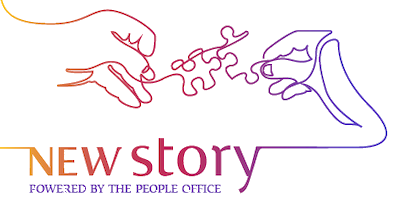We hear a lot of talk about this employer brand. But what is it exactly? The sum of the opinions of all the stakeholders in a company? The perception of whether it would make a desirable employer or not? Who makes the employer brand? One thing is for sure, it cannot be made only by the officially appointed Employer Branding specialist. It is a volatile ever-changing construct made of what is said about a company by its employees, by candidates who have had an interaction with the company or by hearsay.
Ok but then how do you make it? How do you control it, if it is based on hearsay? We all know we will never be able to stop the gossip windmill. The first step is understanding what your employer brand is. You may never have worked on it, consciously communicated a message about what the culture is, but that does not mean that you do not have an employer brand. It’s there, only it’s growing wild and unchecked, reflecting reality. Try listening to how people describe the company and how it feels like to work there. Pin down some characteristics and some elements that are common to the responses.
And if you have worked on it, you must have some glossy statements on walls and some shiny presentations with the values and the mission. Ask any employee on a hallway if they can remember them off the top of their head. That will mostly result in the conclusion that they do not. And why is that? Because it only reflects the wishful thinking of what management would like the company to be, not what the employees perceive that it is. And that is the reality, what they perceive, because they will say so to anyone listening: their friends, their families, anybody on the planet listening in to their conversations in a restaurant or in a line at the coffee shop.
So then, what can you do? Have you ever heard of companies marketing themselves to potential employees by saying: “We offer numerous and real growing opportunities, we have fantastic learning programs, we invest a lot in teaching you how to become a manager, we promote – but not too much/ too high- and in exchange we expect you to work very long hours, to fall in line with top decisions without too much comment and most of all to play the office politics correctly or you’re out”? Or perhaps ‘’We will pay you the best compensation package for this position that you will ever get in this country, but in exchange for that we expect full submission, invasion of your privacy, being shouted at and sometimes even humiliated, as your boss will be always right”?
No, you will never see any company owning up to that sort of culture, but we know this is the reality. So before starting to design your culture, your brand, it helps to understand correctly what it already is. And then to communicate it truthfully to candidates. Maybe not as brutally as I phrased it above, but honestly. They will discover everything within a few days of starting anyway, so you would be saving yourself trouble, time and recruitment costs. Even though it seems simple, companies almost never do it.
And then, once you know what your brand is and you start communicating it to candidates correctly, what can you do further? How do you improve the perception of the existing employees, as we all know they are the permanent ultimate brand ambassadors? My opinion is that you improve their perception not by trying to improve the brand or by specific measures or action plans designed by the Employer Branding Department, but by consistently building an environment based on transparent communication and meaningful work. That means that all the management decisions and all the promotion decisions and all the HR Strategy converge around these two questions, asked before taking any major decision: Do I understand what the organization wants from me? Do I feel that my contribution is valuable and valued?
This is incredibly hard to do, even though it sounds simple. It takes time and investment in developing people, in saying the truth, even when not pleasant, in keeping the helm firmly towards openness and inclusion and meritocracy and keeping promises. It takes an environment where HR sits at the decision table and is consulted during management meetings, not just informed after the fact. Companies usually find it much simpler to say they have invested in their employer brand by offering a “nice environment to work in”, providing fruit baskets and books and tennis tables and relaxation rooms. When in fact the environment in which we all would like to work is the one in which our voices are heard, and the content of our job seems valuable to us.
The solution starts from within, from creating meaningful work, that the employees are excited to perform. It goes naturally from there. If they are happy with what they do, their performance is better, the productivity grows and they will praise the company wherever they go, without being asked to.
Once more, I agree with Tony Hsieh, who sees the mission of the company and thus of the employees as being to deliver happiness and in process making themselves happy and fulfilled. And as a by-product, the employer brand is skyrocketing as the people who talk about it have fantastic things to say, not because they are written on walls, but because they believe them. And I agree with Scott Gould, the most important thing companies can do to engage their employees is to offer them clear purpose and benefit and worthwhile work and as a result, they will tell the story of the company as they see it, thus strengthening the employer brand. May we see more of those behaviors in the future.
Resources: Scott Gould “The shape of engagement”
